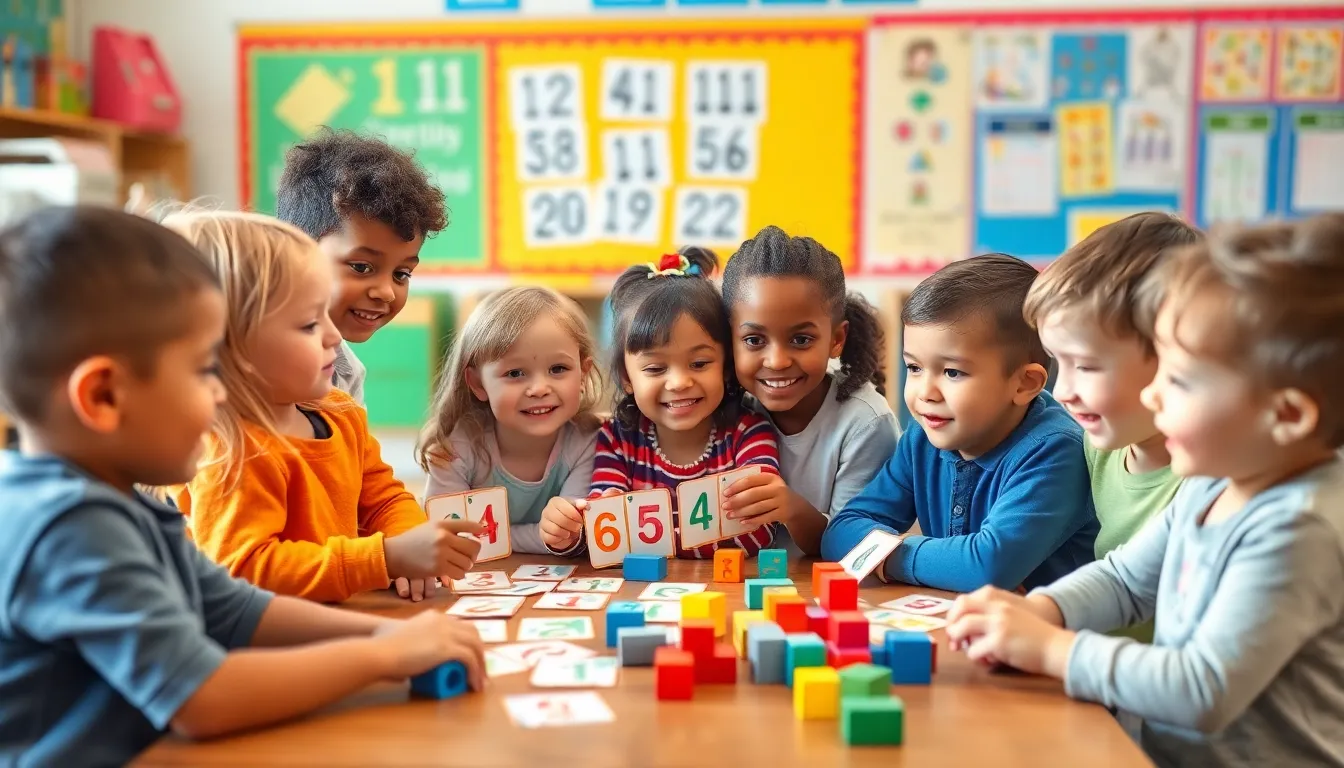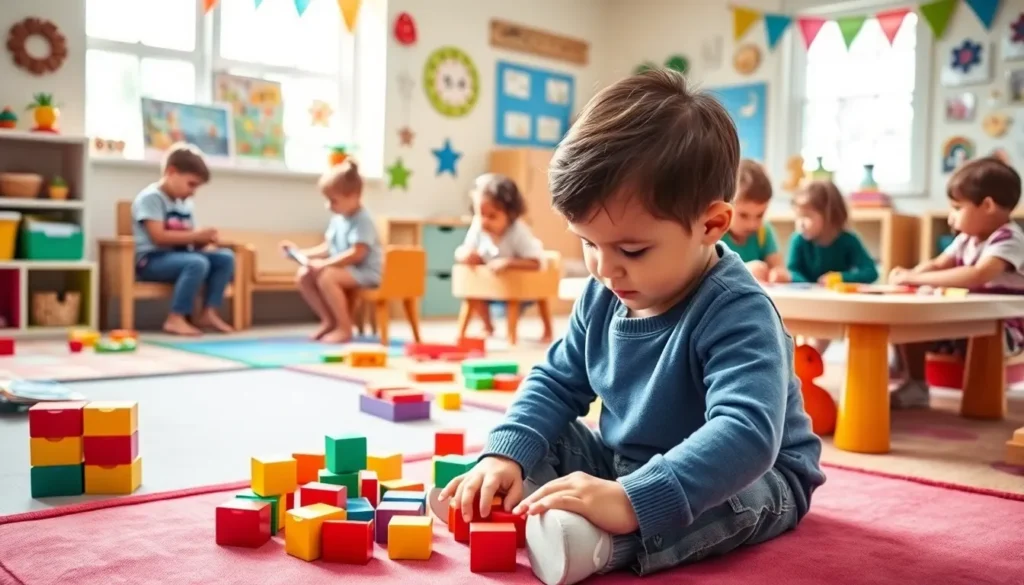In a world where numbers reign supreme, mastering number recognition is like unlocking a secret door to endless possibilities. Imagine your child confidently counting their candy stash or quickly calculating how many more cookies they can devour. It’s not just about math; it’s about building a foundation for critical thinking and problem-solving skills.
Table of Contents
ToggleUnderstanding Number Recognition
Number recognition plays a vital role in a child’s early education. This skill lays the groundwork for future academic success and practical life skills.
Definition and Importance
Number recognition involves recognizing and identifying numbers in various formats. This skill is essential for children as it helps in learning counting, mathematical operations, and everyday tasks. Mastery of number recognition contributes to building a mathematical foundation, leading to enhanced problem-solving and critical thinking abilities. Research indicates that children proficient in number recognition often excel in mathematics and related subjects, resulting in improved overall academic performance.
Cognitive Development in Children
Cognitive development ties closely to number recognition as children encounter numbers in their environment. Engagement with numbers fosters brain development and enhances memory capacities. Learning numbers aids in cognitive associations, allowing children to grasp concepts such as quantity, sequence, and spatial awareness. Activities like counting objects or using educational games can significantly boost these cognitive skills. Studies have shown that early exposure to number recognition correlates with advanced cognitive functioning and mathematical understanding later in life.
Techniques for Teaching Number Recognition

Teaching number recognition involves various methods that cater to different learning styles. Effective techniques help build a strong foundation in mathematics for young learners.
Visual Aids and Manipulatives
Using visual aids and manipulatives enhances comprehension of number concepts. Flashcards featuring numbers can create quick recognition practices. Colorful charts displaying numbers promote engagement and retention. Physical objects like counting blocks allow children to connect numbers with quantities. Imagery connects abstract concepts to tangible items. These materials help students visualize numbers, solidifying their understanding.
Interactive Games and Activities
Interactive games and activities encourage active participation in learning. Engaging board games can incorporate counting and number identification effectively. Digital apps designed for number recognition offer immediate feedback. Additionally, group activities such as “number scavenger hunts” motivate collaboration. Fun song and dance routines centered around numbers facilitate memorization. These interactive experiences captivate attention, solidifying number recognition in enjoyable ways.
Challenges in Number Recognition
Number recognition presents several challenges for learners. These challenges can impede a child’s progress in math and other related subjects.
Common Difficulties Faced by Learners
Learners often struggle with recognizing numbers in different formats, such as printed text and digital displays. Number confusion occurs frequently, especially with similar-looking digits like 6 and 9. Additionally, some children find it difficult to associate quantities with numerical symbols, which hinders their counting abilities. Memory retention poses another challenge, as young learners may forget number sequences if not practiced regularly. Associating abstract concepts with physical representations can also prove difficult without appropriate teaching methods.
Strategies to Overcome Challenges
Interactive activities can significantly enhance number recognition skills. Using visual aids, such as flashcards or number charts, facilitates understanding of numerical concepts. Incorporating games, like bingo or matching, keeps children engaged and motivated while they learn. Practicing regular counting exercises with everyday objects, such as toys or snacks, reinforces their connection between numbers and quantities. Encouraging peer collaboration through group learning activities can boost confidence and provide meaningful practice opportunities. Adapting teaching methods to align with individual learning styles ensures a more effective approach to overcoming these challenges.
Assessing Number Recognition Skills
Assessing number recognition skills plays a crucial role in understanding a child’s mathematical development. Various methods exist for evaluating this foundational ability.
Formal Assessment Methods
Standardized tests provide an objective measure of number recognition. These tests evaluate children’s ability to identify, name, and manipulate numbers across various scenarios. Observational assessments involve teachers recording children’s interactions with numbers during structured activities. This approach adds context to a child’s understanding of number concepts. Data gathered from formal assessments informs instructional strategies. Educators can adapt lessons to target specific areas where students struggle, ensuring a tailored learning experience.
Informal Assessment Techniques
Informal assessment techniques offer flexibility in evaluating number recognition. Using classroom games, teachers can observe children’s numerical interactions in a low-pressure environment. Worksheets featuring number identification tasks allow for quick assessment of skills. Engaging children in hands-on activities, like counting everyday items, encourages active participation. Peer interactions during group tasks provide insight into collaborative understanding. These informal methods create opportunities for immediate feedback, enabling educators to reinforce learning in real-time. By combining various informal techniques, teachers can boost students’ number recognition in dynamic ways.
Mastering number recognition is vital for children’s overall development and academic success. By engaging with numbers early on, children build a strong mathematical foundation that supports critical thinking and problem-solving skills. Utilizing effective teaching techniques and interactive activities can significantly enhance their learning experience.
Regular assessment of number recognition skills not only identifies areas for improvement but also reinforces learning in a supportive environment. As children navigate the world of numbers, their cognitive abilities flourish, preparing them for future challenges. Emphasizing this skill sets the stage for lifelong mathematical competence and confidence.




